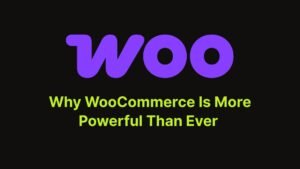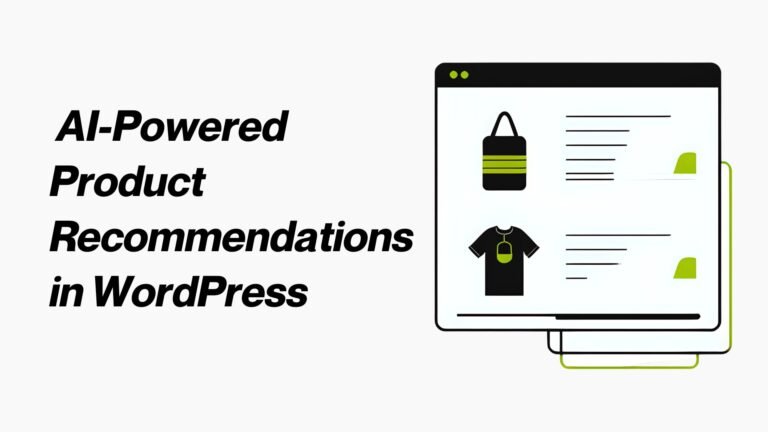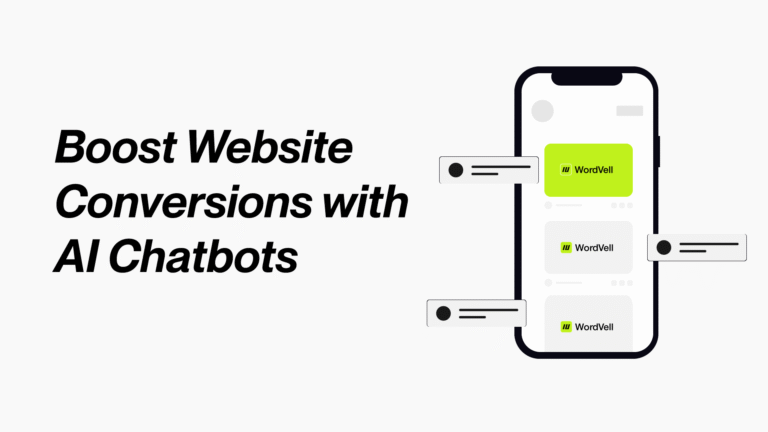A Platform for
Modern
WordPress Developers

Why WooCommerce in 2025 is More Powerful Than Ever – What You Can Build with It
Introduction
If you have landed here, then you are in the right place because this is the detailed guide to understand the power of WooCommerce in 2025.
Let’s start with a quick reality check. WooCommerce now powers four million e-commerce stores, which is more than 30% of all online stores worldwide.
That means nearly 1 out of every 3 stores you buy from online could be running on WooCommerce.
Yet, many people still think of it as a “simple WordPress plugin” built for small shops, then you are behind.
Here’s the truth…
In 2025, it has evolved into a full-fledged commerce engine, trusted by startups, global brands, and even enterprises that want more control than Shopify or BigCommerce.
This is not just a theory. This is a detailed playbook, crafted with expert insights and real-world strategies. By the end, you will walk away knowing:
- What’s changed in WooCommerce (and why it now rivals Shopify & Magento).
- Why Startups and Businesses are preferring it
- What you can build with it (so you can get inspired by actual use cases).
- An action plan that you can apply right now to harness its full power.
So, whether you are a student learning eCommerce, an entrepreneur scaling a side hustle, or a business owner tired of subscription fees, this is your go-to guidebook for WooCommerce in 2025.
The Evolution of WooCommerce: Why It’s Different in 2025
To really understand why WooCommerce is so powerful today, you need to see how far it has come.
What started as a basic e-commerce WordPress plugin has now transformed into a global commerce ecosystem, and this journey is worth paying attention to.
From Plugin to Ecosystem
In its early years, WooCommerce was exactly what the name suggests a simple “ecommerce add-on” for WordPress. Small shops used it to list a few products and manage orders, but it was not built for scale.
Fast forward to 2025, and it’s now an enterprise-ready solution that is capable of powering large marketplaces, subscription platforms, and even hybrid, digital, and physical product businesses.
The difference? It’s no longer “just a plugin.” It’s an ecosystem with its own payment system, AI-powered extensions, and thousands of third-party integrations.
Key Milestones on the Journey (2018 → 2025)
The transformation didn’t happen overnight. Several milestones shaped WooCommerce into what it is today:
- Automattic’s investment (the company behind WordPress.com) supercharged development and positioned WooCommerce as its flagship eCommerce product.
- WooCommerce Payments made checkout seamless, eliminating the need for third-party gateways in many cases.
- Block Editor integration allowed store owners to visually design product and checkout experiences with ease.
- AI integrations (2024–2025) changed the game by personalizing recommendations, automated upsells, and chatbot-powered support became standard for WooCommerce stores.
Why It Now Rivals Shopify, Magento & BigCommerce
Here’s the real kicker: WooCommerce now stands shoulder-to-shoulder with Shopify, Magento, and BigCommerce, but with one major difference: freedom.
Unlike SaaS platforms that lock you into monthly fees and limited customization, WooCommerce lets you:
- Own your data and infrastructure.
- Build on your own terms with PHP, APIs, or headless frameworks.
- Scale without the fear of vendor lock-in.
Expert Insight: As one developer recently put it, “WooCommerce lets you own your data and your stack, unlike SaaS platforms that rent you theirs.”
In other words, WooCommerce in 2025 is not just keeping up but it’s giving businesses the control they have been craving.
Core Improvements That Make WooCommerce More Powerful in 2025
If you used WooCommerce a few years ago, you might remember clunky checkouts, slow load times, and a constant struggle to keep up with competitors like Shopify.
In 2025, that picture has completely changed. WooCommerce has gone through a deep technical evolution, making it faster, smarter, and more secure than ever.
Performance Boosts
Speed matters in e-commerce, and WooCommerce has caught up. The new optimized checkout block is now as fast and frictionless as Shopify’s carts.
For developers, headless commerce readiness means WooCommerce can easily power modern frontends built on Next.js, React, or Gatsby.
Security & Compliance
Handling payments in 2025 requires enterprise-grade security.
WooCommerce is now PCI-DSS compatible, supports GDPR-friendly plugins, and integrates AI-powered fraud detection that monitors transactions in real-time.
Store owners no longer need to juggle compliance headaches, but it’s built into the ecosystem by WooCommerce.
AI-Powered Features
WooCommerce now comes alive with intelligence.
From personalized product recommendations that boost order value, to automated upsell/cross-sell flows, to AI chatbots that handle support 24/7.
Due to this, it feels less like a plugin and more like a digital sales team working behind the scenes.
Mobile-First Enhancements
With most customers shopping on phones, WooCommerce’s mobile-optimized checkout and PWA (Progressive Web App) support ensure a seamless buying journey.
Even small stores can now deliver app-like experiences without building a custom app.
In short, WooCommerce 2025 is leaner, faster, smarter, and built for modern eCommerce.
What You Can Build with WooCommerce in 2025
Here’s where WooCommerce really shines: it’s not just for “selling products” anymore.
In 2025, it has matured into a flexible engine that supports almost any online business model you can imagine.
Let’s explore what you can actually build with it.
Classic Online Store
Whether you are selling T-shirts, electronics, or furniture, WooCommerce makes retail simple.
For wholesalers and B2B, plugins like WooCommerce Wholesale Suite enable bulk pricing, role-based discounts, and advanced order management.
Subscription & Membership Sites
Running an e-learning platform, SaaS product, or digital magazine?
With WooCommerce Subscriptions (paid add-on), you can bill monthly or yearly, manage upgrades/downgrades, and handle recurring revenue like a pro.
(Free Alternative: Subscriptions for WooCommerce)
Multi-Vendor Marketplaces
Want to build your own “mini-Amazon” or Etsy-style marketplace?
Extensions like Dokan or WCFM Marketplace let you onboard vendors, manage commissions, and even create separate vendor dashboards.
Hybrid Models (Content + Commerce)
Bloggers and influencers are now blending content with commerce.
Imagine running a WordPress blog where you also sell digital courses, eBooks, or branded merchandise. This all can be powered by WooCommerce.
Service-Based Businesses
From doctor bookings to consultants selling digital templates, WooCommerce supports it.
Add-ons like WooCommerce Bookings (paid) handle appointments, while digital download features are built in.
(Free Alternative: Bookings for WooCommerce)
The point is simple: no matter your idea, WooCommerce has a plugin stack ready to make it real.
Expert Insights: Why Businesses Choose WooCommerce in 2025
When deciding on an eCommerce platform, businesses don’t just look at features only, but they ask, “Will this scale with me, save me money, and give me control?”
In 2025, WooCommerce answers all three with confidence.
Developer Perspective
Developers love WooCommerce because it offers total freedom.
Built on PHP and extendable with plugins, extensions, and APIs. It integrates with virtually any system, either ERP, CRM, or custom-built apps.
Unlike closed SaaS platforms, where developers are stuck working within rigid frameworks.
One WooCommerce agency put it simply: “If you can imagine it, you can build it in WooCommerce.”
Store Owner Perspective
For entrepreneurs, WooCommerce is a budget-friendly powerhouse.
Shopify and BigCommerce charge recurring SaaS fees, while WooCommerce itself is free where you only pay for hosting and optional extensions.
That’s why businesses scaling from a side hustle to multi-region operations often prefer WooCommerce because it is flexible for branding, pricing strategies, and long-term scaling.
Case Studies in Action
- Fitness Influencer Store: A coach sells workout subscriptions, courses, and branded gear all under one WooCommerce setup. Subscriptions handle recurring revenue, while Printful integration automates merchandise orders.
- Local B2B Wholesaler: A regional distributor started with WooCommerce Wholesale Suite and later scaled into multi-region sales. Instead of moving platforms, they simply added multi-currency support and regional warehouses. This is something SaaS platforms would have charged premium fees for.
Expert Quote: As one WooCommerce developer noted, “Platforms like Shopify rent you a store. WooCommerce lets you own it.”
In short, developers appreciate its flexibility, store owners value the cost savings and control, and together, that’s why WooCommerce continues to dominate in 2025.
Action Plan: How to Maximize WooCommerce Power in 2025
So far, we have looked at what WooCommerce can do. But how do you actually set it up for maximum performance?
Think of this as your action plan or a strategy through which you can literally tick off today to future-proof your store.
1. Choose the Right Hosting
The first step in building your e-commerce store is to purchase a hosting plan.
Skip cheap shared hosting and go for cloud or VPS hosting optimized for WooCommerce because your store is only as fast as the server it runs on.
Options like Kinsta, Cloudways, or SiteGround ensure faster load times and better uptime during sales spikes.
2. Install WordPress & WooCommerce + Design Your Store
Start by setting up the foundation:
- Install WordPress on your hosting (most providers offer 1-click installs).
- Add WooCommerce from the WordPress plugin directory.
- Pick a modern theme (like Blocksy, Astra, or Storefront) for a sleek design.
- Add products or services with images, descriptions, and pricing.
- Configure basics: payments (Stripe/PayPal), shipping zones, and taxes.
So, this step gets your store live and ready for customers.
3. Secure Your Store
Security is non-negotiable.
- Enable SSL certificates (a must for payments).
- Install a firewall plugin like Wordfence or Sucuri.
- Set up automated backups with UpdraftPlus so you are never at risk of losing data.
👉 Read our practical, expert-backed guide to secure your WordPress site
4. Install Must-Have Plugins
Boost your store’s intelligence and sales with essential plugins:
- AI Recommendation Engine → personalized product suggestions.
- WooCommerce Subscriptions → recurring revenue streams.
- Cart Recovery Plugin → win back abandoned carts.
- SEO plugin (RankMath or Yoast) → keep your products visible in search.
5. Optimize Conversions
Little tweaks make a huge difference.
- Enable 1-click checkout for faster payments.
- Prioritize mobile-first UX because most customers shop on phones.
- Use exit-intent offers to capture leaving visitors with discounts or free shipping.
6. Scale Smartly
When you are ready to grow:
- Use caching/CDN to handle traffic surges.
- Explore headless commerce with React or Vue frontends for modern, lightning-fast stores.
- Run split tests on product pages and pricing to keep improving conversions.
So, this is an action plan that you can use to develop your WooCommerce store from scratch
The Future of WooCommerce (2025 & Beyond)
If WooCommerce has come this far by 2025, what’s next?
The short answer is that even more innovation. The future of WooCommerce is being shaped by AI, modern architectures, and a community-driven ecosystem that grows stronger every year.
AI-Commerce: Predictive Selling & Shopping Bots
AI is moving from “nice-to-have” to “must-have.”
Expect WooCommerce stores to use predictive algorithms that know what a customer needs before they even search.
Imagine personal shopping bots that guide buyers through products like a human assistant, which is only powered by WooCommerce AI integrations.
Headless Commerce: Decoupled Frontends
Headless setups are becoming mainstream.
With WooCommerce as the backend and React, Next.js, or Vue as the frontend, businesses get blazing-fast, app-like shopping experiences.
This future is about flexibility with the same backend powering websites, mobile apps, and even smart devices.
Expanding Ecosystem: Plugins & Automattic Backing
WooCommerce thrives because of its ecosystem.
With thousands of plugins, the community builds solutions for every niche. Backed by Automattic’s continuous funding, innovations, and now from AI-powered checkout flows to blockchain payments, which are added at a rapid pace.
Future-Proof Advantage: Community Over Lock-In
Unlike SaaS platforms that can raise prices or restrict features, WooCommerce remains community-driven and open source.
That means businesses own their data, their stack, and their future. No lock-ins, just freedom to scale however they choose.
The bottom line? WooCommerce is not just keeping pace, but it is shaping the future of eCommerce itself.
Conclusion
WooCommerce in 2025 is no longer “just a plugin.”
It has grown into a full-scale eCommerce powerhouse, capable of competing with Shopify, Magento, and BigCommerce while still giving you the freedom of open source and the strength of the WordPress ecosystem.
The biggest takeaway? Anyone can scale with WooCommerce.
Whether you are starting a small side hustle, building a subscription business, or expanding into a multi-vendor marketplace, the tools are already in your hands.
With the right setup, optimized hosting, secure payments, and AI-driven enhancements, WooCommerce can grow with you from day one to enterprise scale.
But knowledge without action changes nothing.
That’s why we built this guide with an action plan, not just theory. You now have the plan and expert insights to make your store future-ready.
Next Step?
Don’t wait. Follow our action plan and start building (or optimizing) your WooCommerce store today.
Even small improvements like enabling the new checkout or adding AI recommendations can make a big impact on your sales.
And if you want to keep learning, stay updated, and get insider strategies…
📩 Subscribe to our newsletter for WooCommerce insights, WordPress tutorials, and step-by-step guides to stay ahead.


